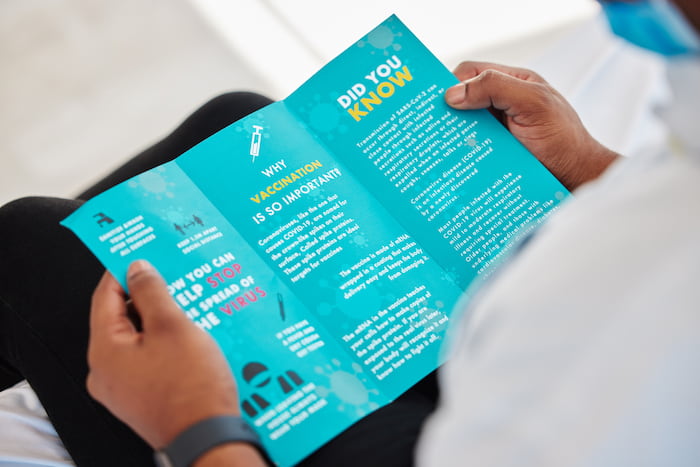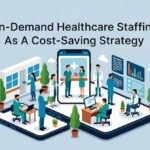Given the dominance of online platforms in this digital age, it’s easy to overlook the enduring relevance of traditional print materials. However, when it comes to patient education and awareness, print materials still hold a valuable position. They serve as tangible reminders, provide easy access to information, and can be especially beneficial in areas with limited internet connectivity.
Despite the rise of digital methods, there’s still a strong emphasis on the importance of high-quality print materials, as highlighted by companies like First Colour. When designed correctly, these materials can significantly aid in patient understanding, retention, and compliance with medical guidelines.
Below is a list of effective print materials for patient education and awareness.
Key Features Of Effective Print Materials
Before delving into the different types of print materials, it’s important to get familiar with their key features. These include:
– Readability: The primary purpose of patient education materials is to convey information. Therefore, using clear fonts, appropriate sizes, and structured layouts is crucial. Bullet points, subheadings, and concise paragraphs can also make the content more digestible.
– Engaging Design: An appealing visual layout with relevant images and illustrations can draw attention and make complex medical topics more understandable. Using color, proper contrast, and a balanced composition can help enhance the material’s overall effectiveness.
– Durability: Print materials in medical settings often see frequent handling. Therefore, use durable paper, lamination, or other protective coatings to extend the lifespan of the material and ensure that it remains available to patients for extended periods.
By incorporating these key features, healthcare providers can design impactful print materials.

The Different Types Of Print Materials For Patient Education
Now, let’s explore the various types of print materials commonly used in patient education and awareness. Print materials have been instrumental in conveying critical health information to patients. By providing tangible resources that they can refer to at their convenience, these materials can reinforce verbal instructions, help clarify doubts, and promote adherence to medical advice.
Below are the different types of print materials used for patient education and awareness:
1- Brochures
These are concise, folded pamphlets that offer snapshots of vital information. Brochures are great for presenting summarized details about a specific condition, medication, procedure, or health practice. Due to their compact nature, they can be easily distributed during medical appointments or health fairs. Also, the brochures’ brevity ensures that key points are highlighted, making it easier for patients to grasp the essentials quickly.
2- Posters
These are large visual aids designed for display in clinics, hospitals, or health centers. Posters often depict medical diagrams, preventive measures, or general health guidelines. They serve as constant reminders and are especially effective in waiting rooms where patients have time to absorb the information. Lastly, their visual appeal grabs attention, and the concise information can be consumed in a short span, even from a distance.
3- Booklets and Manuals
These are multi-page publications that delve deep into subjects. Booklets and manuals are used when patients require comprehensive information on their condition, treatment plan, or post-operative care. They can encompass everything from dietary guidelines to physiotherapy exercises. They also allow for in-depth exploration by ensuring that patients and their families have a thorough understanding and a resource to refer back to.
4- Fact Sheets
These are single-page documents that focus on key information. Fact sheets are ideal for conveying essential facts about diseases, medications, or post-treatment care. They’re straightforward and are often used as quick reference guides. Their simplicity also ensures that patients can quickly scan and absorb the most critical details.
5- Flashcards
These are small cards with information on one side and corresponding visuals or answers on the other. Flashcards can be used for quick revision, testing knowledge, or promoting active engagement with the material. They might highlight symptoms, medication dosages, or even medical terminology. They also promote active recall, which can improve the retention of information.
6- Newsletters
These periodic publications are often distributed monthly or quarterly. Newsletters keep patients updated about the latest health news, innovations in treatments, or even upcoming health-related events. They can also spotlight patient success stories or offer seasonal health tips. By receiving regular information from newsletters, patients feel more engaged and connected with their healthcare providers.
7- Infographics
These are visual representations of information, data, or knowledge. Infographics are perfect for explaining complex medical processes or statistics in a simplified manner. They combine graphics with minimal text to make data more understandable. Their visually appealing nature ensures high engagement, and they can simplify complex topics, making them easier to understand.
8- Worksheets and Journals
These are interactive materials that patients can fill out. Worksheets might guide patients through exercises or track symptoms. Journals can help patients record their progress, side effects, or daily health routines. These print materials encourage active participation, allowing patients to take charge of their health and providing healthcare providers with tangible feedback.
These various print materials available for patient education can ensure that healthcare professionals can cater to diverse learning styles and information needs. By selecting the appropriate print medium and ensuring its design and content are top-notch, healthcare providers can significantly enhance patient understanding and outcomes.
Conclusion
While the digital revolution continues to reshape various sectors, the realm of patient education and awareness still benefits immensely from traditional print materials. By keeping the information mentioned above in mind, healthcare providers can identify the various print materials for their education and awareness campaigns. The materials’ tactile nature, combined with effective design and content strategies, can ensure they remain a cornerstone in educating and informing patients about their health.
Read Also
- Creative Approaches to Alleviating Healthcare Staff ShortagesHospitals and clinics are facing staff shortages, which makes it harder to take care of patients well. Finding simple and useful solutions is very important. Easy changes like flexible work hours, good training, and chances to grow can help staff stay happy. Technology, like online doctor visits and helpful tools, can make work easier. Smart… Read more: Creative Approaches to Alleviating Healthcare Staff Shortages
- Understanding the Role of Sterilizers in Healthcare FacilitiesHave you ever wondered how hospitals keep their equipment safe enough to use on dozens of patients every day? Most people never think about what happens behind the scenes, yet these hidden steps play a huge role in patient safety. Sterilizers are part of that system, working quietly to remove harmful germs before any instrument… Read more: Understanding the Role of Sterilizers in Healthcare Facilities
- Building Healthcare Access Where It’s Needed Most: A Local First ApproachHealthcare shouldn’t depend on where you live. But in the U.S., it often does. If you’re in a big city, you likely have options. If you’re in a small town or an underserved neighbourhood, it’s a different story. To fix this, more healthcare leaders are turning to a local-first approach. That means putting clinics and… Read more: Building Healthcare Access Where It’s Needed Most: A Local First Approach
- Revolutionizing Patient Engagement: Innovative Solutions for Improved Care and Treatment SuccessNavigating healthcare system can often feel overwhelming for patients. Between appointments, prescriptions, and treatment regimens, it’s easy for crucial details to get lost in the shuffle. That’s why effective patient engagement and support solutions are more important than ever. Companies like Serva Health, with their pharma hub services, are stepping up to ensure that patients… Read more: Revolutionizing Patient Engagement: Innovative Solutions for Improved Care and Treatment Success
- On-Demand Healthcare Staffing As A Cost-Saving StrategyThis is an exciting and challenging time for the healthcare industry. Technology is advancing almost faster than humans can keep pace. New legislation is creating fresh challenges for the future of healthcare, and the shifting population demographic continues to place more pressure on healthcare facilities. Amidst these changes, healthcare facilities are facing a critical staffing… Read more: On-Demand Healthcare Staffing As A Cost-Saving Strategy






